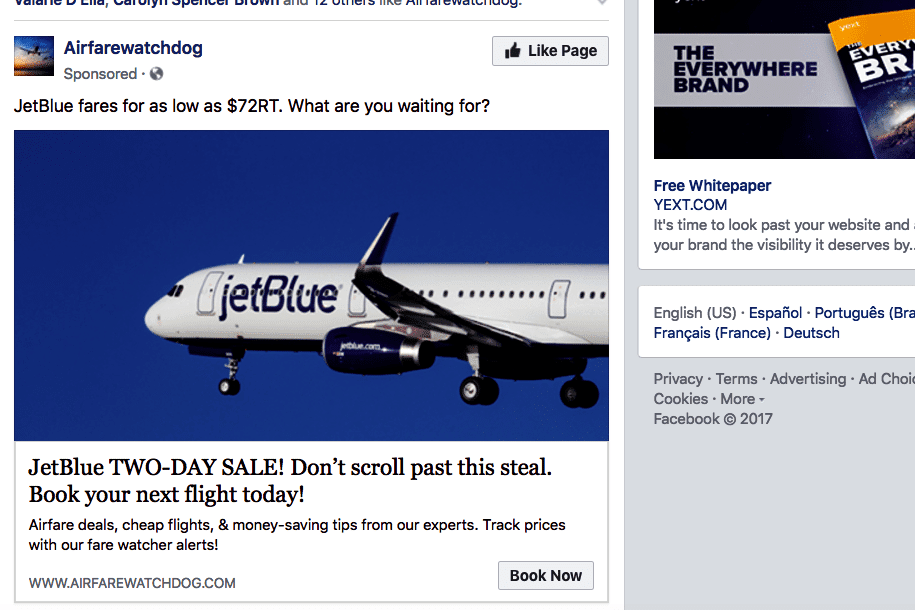Facebook Video and Ads Are Driving Its Business More Than Messaging

Skift Take
Messaging was once the darling of the travel industry and for some brands it still is. But video continues to be what many brands are focusing on and monetizing that trend is a priority for Facebook.
Travelers are watching more videos on mobile devices than ever before and Facebook is seizing that trend to help grow its business and introduce more mobile video ads into news feeds.
But its Facebook Messenger and WhatsApp platforms, while an important part of its business, won't be one of the biggest drivers of the company's growth during the next few years.
Rather, artificial intelligence, or machine-learning technology, will play an increasingly critical role on Facebook platforms and will also be key to making mobile video ads more relevant – eventually, said Facebook co-founder and CEO Mark Zuckerberg, speaking to investors and analysts on the company's second quarter 2017 earnings call earlier this week.
Zuckerberg told analysts and investors this week that he's seeing a shift in the way that brands market their products to consumers because of artificial intelligence. "Now you can put a creative message out there, and AI can help you figure out who will be most interested," he said. "A lot of the time you don't even need to target now because AI can do it more precisely and better than we can manually."
Facebook's second quarter revenue was $9.3 billion, up 45 percent year-over-year. Of that, second quarter ad revenue was $9.2 billion, up 47 percent year-over-year and mobile ad revenue accounted for $8 billion of the total ad revenue, up 53 percent year-over-year.
